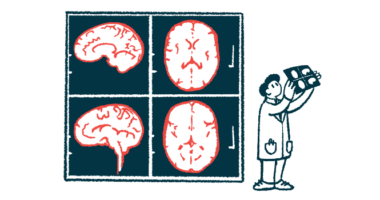AAN 2023: Swelling in brain vein may help identify neurosarcoidosis
Imaging for this marker could lead to timely diagnosis and treatment

Swelling of a specific vein in the brain may be a sign of neurosarcoidosis, a form of sarcoidosis that affects the nervous system, a new study suggests.
“Incorporating this in the current diagnostic criteria may result in timely intervention, and we encourage radiologists to look for this marker in patients with suspected neurosarcoidosis,” researchers wrote.
Study results were shared in a poster, titled “Diagnostic Relevance of the Medullary Vein Sign in Neurosarcoidosis,” during this year’s annual meeting of the American Academy of Neurology.
Neurosarcoidosis affects about 5%-15% of sarcoidosis patients
Sarcoidosis is characterized by clumps of inflammatory immune cells called granulomas, which can cause damage to various organs throughout the body. When these inflammatory clumps damage the brain and other parts of the nervous system, the disease is called neurosarcoidosis.
Neurosarcoidosis is estimated to affect 5%-15% of sarcoidosis patients. This rare form of sarcoidosis “can be inferred through the clinical presentation, cerebral spinal fluid (CSF) analysis, and magnetic resonance imaging (MRI) scans,” the researchers wrote. CSF is the liquid surrounding the brain and spinal cord.
However, its diagnosis is often challenged by the fact that various other neurological conditions can cause similar symptoms and brain imaging findings.
“The benefits of improving diagnostic criteria for neurosarcoidosis include more rapid diagnosis leading to more prompt treatment, less exposure to potentially harmful antibiotic or antifungals, and less long-term neurological effects,” the researchers wrote.
The medullary vein sign, or the swelling of a large blood vessel that drains blood within the brain called the medullary vein, “has been postulated to be a specific sign for neurosarcoidosis,” the researchers wrote.
However, whether it could be used to accurately identify neurosarcoidosis patients remains unknown.
Now, a team of researchers in the U.S. assessed whether this specific imaging feature could be a useful diagnostic marker for neurosarcoidosis. They reviewed data from 32 people who underwent evaluation for possible neurosarcoidosis at a center in West Virginia.
Among these patients, seven were diagnosed with definitive neurosarcoidosis based on other imaging signs, CSF analysis, and biopsy. Another 16 had possible neurosarcoidosis, five had probable neurosarcoidosis, and the other four definitively had other neurological conditions or infections.
Medullary vein sign deemed effective diagnostic marker for neurosarcoidosis
Results showed that the medullary vein sign was identified in seven of the patients — five of the seven (71.4%) with definite neurosarcoidosis, as well as two of the 16 cases (12.5%) with possible neurosarcoidosis.
Using this imaging sign, the researchers could discriminate neurosarcoidosis patients with a 92.3% specificity (percentage of unaffected cases being correctly ruled out), and a 71.4% sensitivity (percentage of neurosarcoidosis cases being correctly identified).
In addition, CSF data in these patients “was largely inconclusive, and MRI was not the major diagnostic factor in most cases,” the researchers wrote.
“Our findings support that the medullary vein sign has a high specificity and should be included in the diagnostic criteria for neurosarcoidosis,” the team wrote, adding that this sign may “potentially fill the diagnostic gaps that have challenged the timely diagnosis of neurosarcoidosis.”








